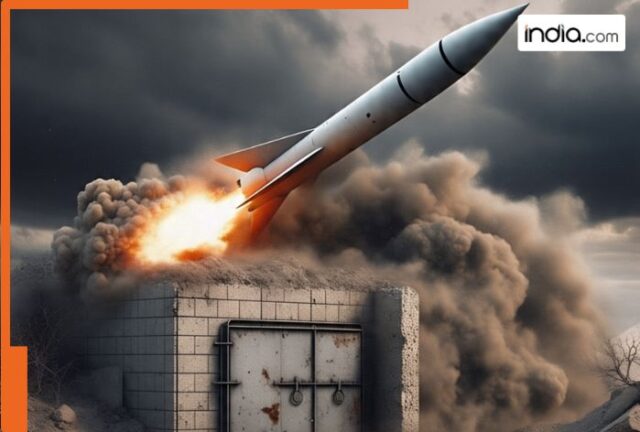On June 21, the US carried out a major strike on Iran’s underground Fordow nuclear site, using its most powerful bunker-buster weapon, the GBU-57 bomb. This was the first time the U.S. deployed this weapon in a real-world operation.
India’s top defence research agency, DRDO, is now working on two upgraded versions of the long-range Agni-5 missile. These new versions will be able to carry a massive 7,500 kg warhead, known as a bunker buster, which can go as deep as 100 meters underground to destroy enemy nuclear systems, radar stations, weapon storage sites, and command centers.
Why this matters now
This news comes shortly after the United States used 14 powerful GBU-57 bombs on Iran’s underground Fordow nuclear facility on June 21. That plant was buried 200 feet deep, and the GBU-57 bombs carried 2,600 kg warheads.
What’s new in the upgraded Agni-5?
- The current Agni-5 missile can travel up to 5,000 km carrying a nuclear warhead.
- The two new versions will have a shorter range of 2,500 km, but they will be specialised for underground targets.
- These will strike at hypersonic speed, between Mach 8 to Mach 20which is 8 to 20 times faster than the speed of sound.
- The warhead will weigh 7,500 kg, making it more powerful than America’s GBU-57, which weighs 2,600 kg.
If successful, this will bring India on par with the U.S., whose largest bunker buster, the GBU-57, weighs 13,600 kg (30,000 pounds). DRDO’s new missile could make India one of the very few countries with such advanced deep-strike capability.
Why these new missiles are important for India
After Operation Sindoor, India has started focusing more on developing missiles that can destroy underground enemy bunkers. With rising tensions like India-Pakistan issues and the ongoing Iran-Israel conflict, India is strengthening its defence systems to be ready for any future threats.
What’s the Threat?
- Pakistan and China have built strong underground military bases near their borders.
- These bases are often hidden deep under mountains or in high-altitude regions, making them hard to target with regular weapons.
How Will These Missiles Help?
These bunker-busting Agni-5 missiles will be able to destroy enemy command centers, weapon storage sites, and radar units located underground. They will be especially useful in hilly and mountainous areas, where traditional missiles may not work effectively.
America’s GBU-57: The World’s Most Powerful Bunker-Buster Bomb
On June 21, the U.S. carried out a major strike on Iran’s underground Fordow nuclear site, using its most powerful bunker-buster weapon — the GBU-57 bomb. This was the first time the U.S. deployed this weapon in a real-world operation.
The GBU-57 weighs 30,000 pounds (around 13,600 kg) and is specially designed to destroy deeply buried bunkers and underground targets. It can penetrate thick layers of rock or concrete before exploding.
According to Lieutenant General Dan Kane, Chairman of the U.S. Joint Chiefs of Staff, it took the U.S. 15 years to develop this bomb. When the Fordow site was discovered in 2009, the U.S. didn’t have any weapon strong enough to destroy it. That’s when the development of this powerful bomb began.
India to launch 52 Defence Satellites in next 4 years
Following Operation Sindoor, India is also planning to boost its space-based defence power. The Indian government has approved a plan to launch 52 special defence satellites by 2029. These satellites will act as “eyes in the sky” to monitor the Pakistan and China borders 24/7.
- These satellites will be powered by Artificial Intelligence (AI).
- They will orbit at 36,000 km altitude and communicate with each other to send signals, images, and messages back to Earth quickly and accurately.
- The project is being carried out under the Defence Space Agency, as part of the Space-Based Surveillance Phase-3 (SBS-3) plan.
- The government has approved a ₹26,968 crore budget for this mission. It was cleared by the Cabinet Committee on Security in October 2024.
Also Read:




















































